Updated 24/03/24
In my other stories, it has already emerged that Adolf Hitler’s initiatives have caused untold suffering and victims. The bizarre battle of the Hürtgenwald and the battle of the Gustav Line, but especially the enormous number of victims of the concentration camps, stand out above that.
But even these human dramas stand in the shadow of what has happened in Russia at Operation Barbarossa and the Battle of Stalingrad. Stalin, but also Hitler spoke of an “average ten-day consumption of troops”.

Stalin
The atrocities under Hitler are well known and if not then you can go through the blog “Murder factories”, but also Joseph Stalin could do some of it.
Joseph Stalin was born on December 18, 1878 in Georgia under the name Ioseph Dzhushvili, the son of a shoemaker. After a not so pleasant childhood, Joseph joined the Russian Social Democratic Workers Party (RSDAP) of Lenin in 1904. He already put a organazation together that specialized in purges to get rid of Lenin’s opponents. Stalin did not have any problems with that. From his first marriage, he held a son about Yakov, whom he despised. Yakov attempted suicide as a result of the way he was treated by Stalin. The attempt failed and elicited Stalin’s remark “he can’t even shoot properly.” Yakov enlisted in the Red Army and was captured. An offer by the Nazis to exchange Yakov against Friedrich Paulus was rejected by Stalin. After all, a lieutenant is worth less than a general. Yakov died on April 14, 1943 in Sachsenhausen. A number of his wife’s relatives also fell victim to the purges. With his second wife, Stalin had a son and a daughter. His wife, Nadezhda Alliloejeva, died under suspicious circumstances on November 7, 1932 after an argument with Stalin. His son Vasili served in the Soviet Air Force and died of alcoholism in 1962 under questionable circumstances. His daughter Svetlana Alliloejeva emigrated to the US in 1967 and died there on November 22, 2011.
The purges under his own reign were carried out by Nikolai Yezhov, nicknamed “the bloodthirsty dwarf.” As head of the NKVD, he had a free hand to eliminate anyone who disagreed with Stalin. Jezhov was a ruthless sadist who liked to perform torture himself. Under his leadership, 1.3 million Russians were captured and 680,000 executed. He was also responsible for the gulags, a system of labor camps, roughly equal to the concentration camps of Himmler. At least 140,000 prisoners died from malnutrition and exhaustion in these camps. But also Jezhov fell prey to Stalin’s murderous practices despite the fact that he had liquidated almost everyone who, according to Stalin, had to disappear. He was replaced in 1938 by Lavrenti Beria, the Communist Party chief of Georgia. Beria had narrowly escaped the murder of Jezhov. After a mock trial, Jezhov was executed in a basement room that he had built for that purpose. Beria was no hair better than Jezhov. He, too, was a sadist who enjoyed pain while preferably assaulting and raping young women.
Stalin died in 1953.
Hitler
Hitler felt quite comfortable in June 1941. The capture of the European countries had been particularly successful by the Blitzkrieg, although the lost battle in the air at the Battle of England (July/September 1940), should have warned him that the German army was not invincible. The Luftwaffe was decimated during the Battle of England and it was the first sign of decay of the German attack drive. Due to the many and large bombing of the Allies, Germany was not really able to replace the lost aircraft with new ones. The weakness of the Luftwaffe has often manoeuvred Germany into a chanceless role later in the war.
Hitler had already decided in 1940 to attack the Soviet Union, despite the Molotov-Von Ribbentrop pact concluded on 23 August 1939. Nazi Germany and the Soviet Union agree not to attack each other. It is also a secret agreement to divide Poland and to support the areas of Europe under each other’s sphere of influence. Hitler keeps Stalin to friend and Stalin in turn remains out of the conflict through the agreements and can go his way in Eastern Europe unhindered. The consequences of this can be felt until today.
The Soviet Union is taking parts of Romania, occupied Estonia, Latvia and Lithuania. Finland is not succeeding due to fierce resistance from the Finns. The Finns were far outnumbered, poorly armed and fought a kind of guerrilla war. Stalin’s offensive against Finland that refused to surrender had a high price. In three months, 250,000 Russian soldiers lost their lives, versus 25,000 Finns. In a temperature of -25 degrees, the Finns proved harder, smarter and more motivated. The actions of the Russians are not inferior to the criminal actions that are also committed under Hitler. Torture, executions, mass killings, transports to concentration camps are the order of the day. The Soviet Union thus contributes well to the expansion of German aggression in Europe.
Adolf soon shows that he is a completely unreliable partner. On 22 June 1941, as it would later appear in a fit of complete self-overestimation and intellectual perplexity, he decided to invade the Soviet Union with the provisional end goal of the conquest of Moscow. The most fundamental reason was that Germany would be cut off from oil and other essential raw materials. Also, war for Hitler was an expression of the eternal struggle between the races. Once he had detached himself from the Judeo-Christian ideal of charity, an ideal society could be created in which an elite of Germanic settlers ruled over an underlay of Slavic Untermenschen.
The Soviet Union’s army is virtually unprepared. Until 1938, the Red Army had been entirely focused on waging an attack war by mechanized troops. The tactic was to get the German troops to advance as far as possible. It was then the task of 31 newly established mechanized divisions, each division larger than a very German armored army, to destroy the Germans via mass encirclement attacks. Because not enough tanks had yet been produced, these armoured reserves were kept deep in the Soviet Union. The number of captured or killed Soviet fighters was only 20 percent of the Red Army, 6 million men. The Soviets had another trained reserve of 14 million men. For the 44 months that the war would last, nearly 500,000 men were added to the Soviet army each month. The Russian railways led complete armies at a breaking pace. The German generals saw to their surprise their staff cards glowing red.
In the beginning, the Germans achieve the necessary successes through their Blitzkrieg. But in the end, Hitler loses the war with the Soviets at a very high price. 11 Million Russians killed, 7 million civilians killed and a total destroyed country. However, the areas of the Molotov-Von Ribbentrop agreement remain part of the Soviet Empire for a long time after the war.
During the war, many of the people who were taken up decided to support the Nazis. Including in the first instance Finland. This support did not stem from the adherence of the Nazi idea, but it was chosen by the Nazis apparently over that of the Soviets.
Romania contributed 22 divisions, Finland 14, Hungary a single division, Slovakia 2, Italy 3 (60,000 troops) and Spain a division with nationalist volunteers of 18,000 men.
Operation Barbarossa
The capture of Lebensraum, the elimination of communism, the submission of the Slavic peoples and the extermination of the Jews were at the top of Hitler’s list, entirely in accordance with Nazi ideology. The aim of the operation was to take much of the European part of the Soviet Union. The Soviets had in theory a greater amount of troops, tanks and aircraft, but the Blitzkrieg’s tactics seemed to guarantee a German victory.
The June/December 1941 attack
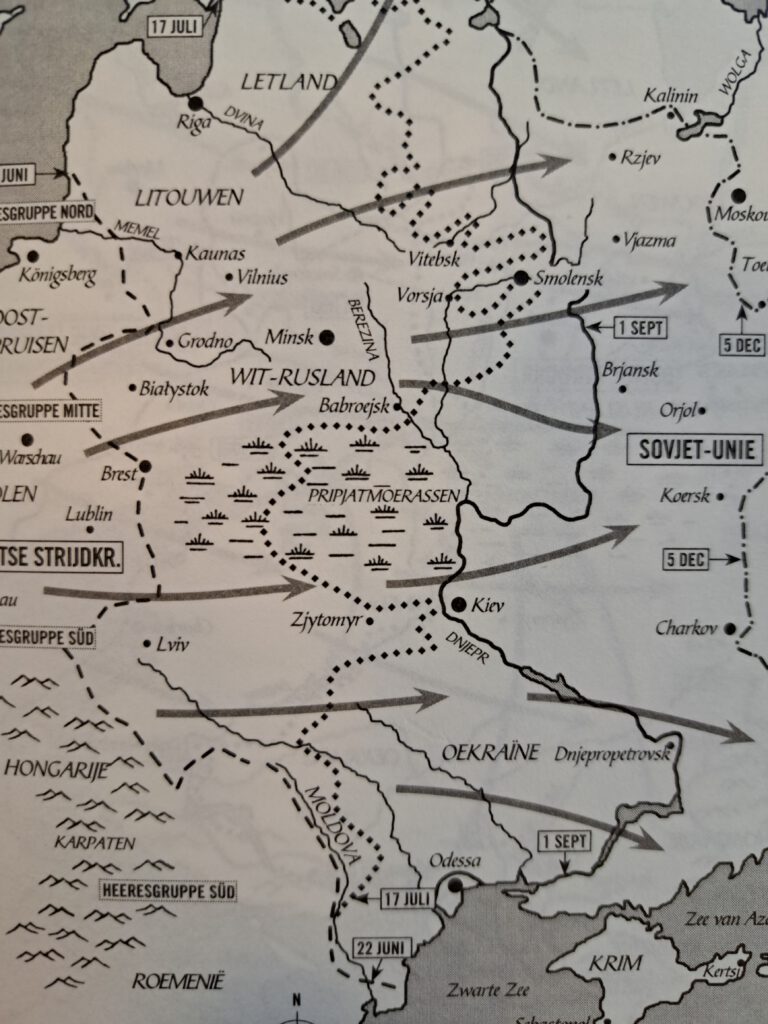
The plan behind Operation Barbarossa was an attack along three axes. Army group North had to advance through the Baltic countries to Leningrad. On the other side of the front, Army Group South had to conquer the Ukraine, the granary of the Soviet Union. Between them was Army Group Middle. This huge army had half of the German armoured divisions and had to push faster and deeper than the other two. At Moscow, the tanks would drift south and north and surround the Red Army. The general staff preferred Moscow as the main goal, but Hitler saw it differently. For him, Moscow was not important. The prospect of wiping the Red Army off the map for good appealed to him more.
In the first weeks of the operation, the Germans made a huge ground gain. The Soviet army did not have the qualities to adequately defend their country. Major Soviet armies were surrounded and destroyed. In late July, the Baltic states, Belarus and the western Ukraine were occupied. Yet the Germans underestimated the resilience of the Soviet army. The Red Army apparently had access to large reserves and threw these armies into battle.
Logistic problems

The Allies would experience the disadvantages of long supply lines in 1944. At first everything was delivered from Normandy ports. The situation only improved when the port of Antwerp was cleared. That’s how it happened to the Germans. The Germans were soon largely through their ammunition and fuel. The logistics could not have kept up with the rapid advances. The German high command could not cope with this new situation. Many generals wanted to continue to conquer the Blitzkrieg and Moscow, but Hitler decided to cut off the big front arch at Kiev differently. In September, 500,000 Soviet soldiers were defeated there.
In early October, the attack on Moscow (Operation Taifun) was finally possible. The Germans surrounded large Soviet armies, but due to the rapid fall of temperatures and intense rainfall, the German offensive got stuck in the mud. When it began to freeze lightly in November, the Germans made another extreme attempt to reach Moscow, but the endurance of the German troops had reached the maximum. In early December, they were ambushed by a fierce cold and the Germans had to withdraw under heavy losses for counter-attacks by the Soviets. The failure of Operation Barbarossa thus became a turning point in the war and ushered in the demise of Nazi Germany. The Red Army looked at it for another three weeks as the Germans crawled closer. When they had come within the reach of the newly established Soviet armies, winter really fell in. Temperatures from far below zero caused German artillery and tanks to fall out and the troops began to suffer from freezing symptoms. The loss of manpower; 830,000 German deaths and injuries.
Due to the lack of a further offensive by the Red Army, the Wehrmacht was able to consolidate itself in the first months of 1942. Hitler was the commander on the Eastern Front. In his role as Oberbefehlshaber Ost, Hitler made major strategic mistakes, which resulted in defeats at Stalingrad and Kursk. In Stalingrad, Soviet troops held out in street battles against German tanks. The German 6th army of Friedrich Paulus was surrounded, but Hitler forbade a withdrawal and ordered the Luftwaffe to supply the 6th army, which did not succeed sufficiently. This resulted in a surrender of the German troops on 2 February 1943. In the Caucasus, one of Hitler’s main goals, the goals had not been met. A small part of the oil fields had been conquered but the yield was very disappointing. The large oil fields remained out of reach. On December 29, Hitler sent Von Kleist the order to withdraw from the Caucasus. Elsewhere on the southern front, the Soviets immediately took the initiative. The Germans had to retreat everywhere. In the north, the Soviets managed to break the encirclement of Leningrad and managed to liberate the south bank of Lake Ladoga. At the center, Hitler agreed to the withdrawal from the Demjansk and Rjev pockets, while the idea had first been to carry out a new attack on Moscow.
The German victory’s dream on the Soviet Union was to die after death. Operation Citadel was another attempt by the Germans to strike back again, but Citadel was the last revival of the Germans on the Eastern Front, turned into a crushing defeat and was a harbinger of the enormous attacking force of the Red Army. Eventually, that would take the Red Army to the gates of Berlin.
The Battle of Stalingrad
The “City of Stalin” was called Tsarytsin before 1925 and from 1961 the city was named Volgograd. Stalingrad, however, will be remembered for the massive battle that took place there. A battle unique in history, exemplary for the horrors of war and illustrative of shown courage, heroism and heroism.
The battle began on August 23, 1942, and lasted five months, one week and three days. On the side of the Axis powers, 840,000 people were killed, on the Soviet side at least 1,130,000 men or women. Not including the civilian casualties. How many of them died is unknown.
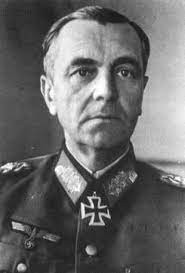
Hitler did not really see the Soviet Union as a danger. He assumed that was the Soviet Union at the end of his Latin. He also could not believe that the inferior Slavs were capable of waging a modern war.
In fact, a successful start had already been made to improve the Soviet armed forces. The machinery had moved to places behind the Urals and plans were being made to quickly increase the production of weapons systems. In 1942, more than 20,000 tanks were produced, five times the German level. Moreover, the new T-34 tanks were superior to the first-generation German tanks.
The acts of war in the winter of 1941/1942 had greatly improved the morale of the Soviet population. The mood turned into an exaggerated optimism. In the course of 1942, further measures were taken to strengthen the unity of the army and party. The command structure became purely military, without direct party control. The whole society was put on a more nationalist read. A new national anthem came with a pronounced Soviet patriotic text “Suzhy nerushimyj”. The hatred of the Germans was also sparked.
Stalingrad September/November 1942
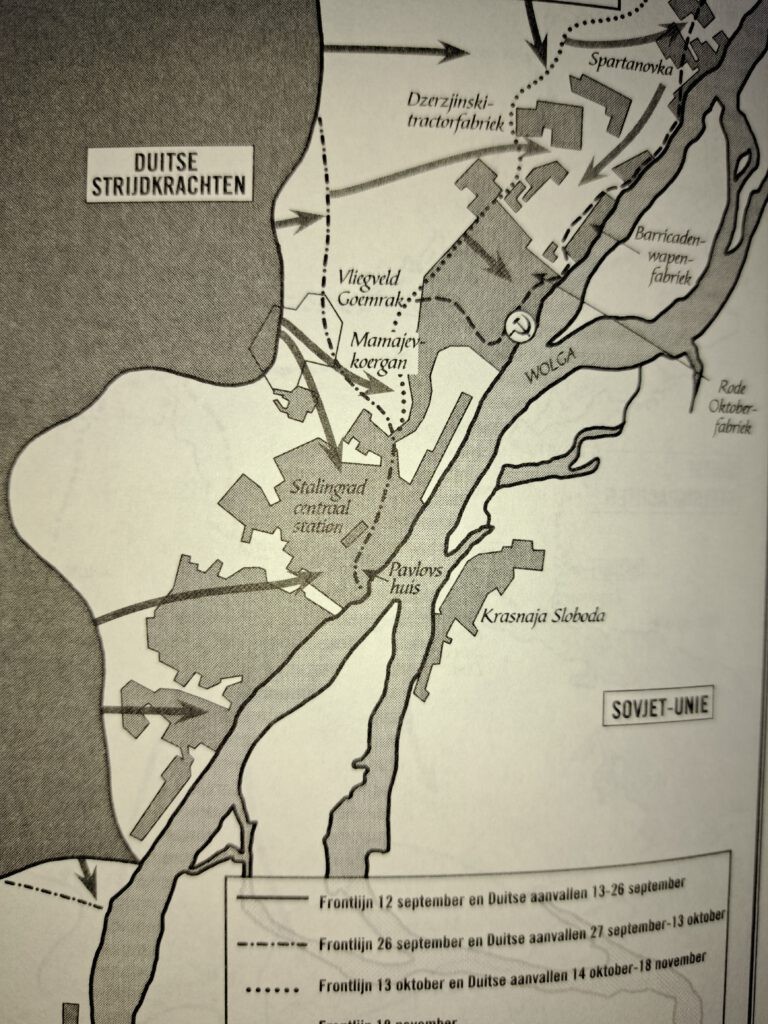
In the winter of 1942, the strength of the German Wehrmacht was significantly reduced. February 1942 340 of the 1139 tanks were still functioning. 2000 tanks were introduced to refill the strength. After a number of futile attempts to conquer Moscow, the Soviets hit back hard but did not take the initiative to further reduce the Germans. The retreating movement bewildered the Germans. Hitler hoped to surround hundreds of thousands of Soviet troops. Now that this was in danger of failure, the 4th armoured army under Field Marshal Fedor von Bock had to deflect south to prevent the withdrawal of the Soviets. To Hitler’s great frustration, the division remained stuck for lack of gasoline. At this stage, Stalingrad became a target entirely out of sight. The retreat of the Soviet troops passed at various points in a flight for the approaching Germans. At Rostov on the Don, great panic broke out. Stalin issued the infamous Order 227: “no step back.” Cowardly soldiers, officers and generals were executed and the command was “purged.” Meanwhile, the retreat continued. It was only at Stalingrad that the enemy advance was to be taken.
The rapid German advance until October 1942 seemed impressive but resulted in an extremely vulnerable position. Hitler again had the idea that the Blitzkrieg was back and that his armies were invincible. On July 18, Hitler eordered the 6th Army to take Stalingrad. Hitler hoped that Stalin would keep the city that bore his name anyway. The Red Army would not retreat further and the result would become an exhaustion battle, so that the weakening of the Soviet army desired by Hitler would still take place.

However, the advance of the 6th Army went less well than hoped. The Stalingrad front continued to resist. For the German troops, the constant repulsion of the counter-attacks was very time-consuming, exhausting and demoralizing. Stalin did not care about the losses. They corresponded to the average ten-day consumption of troops during the course of the war. Only after 3 weeks did the Soviets retreat over the Don. The slow progress of the Germans was remarkable, because contrary to previous attempts, the use of dive bombers (Stuka) could now be used to bomb and eliminate the enemy positions.
On August 23, the 16th Armoured Division managed to reach the Volga. The advance cut Stalingrad off the supply lines. Furthermore, a massive bombing of Stalingrad claimed a huge number of civilian casualties and the city was largely in ruins. The Soviet armies made frantic attempts to break through from the north. During the many months of siege, an ever-increasing force would concentrate here near the city.
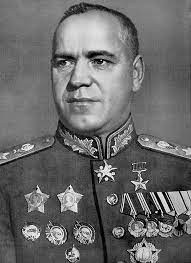
On September 14, the Germans opened the first major attack on Stalingrad and on September 15 a new offensive. The fighting went up and down. On September 22, the Germans had almost the entire south of the city under control. On September 26, the last troops of the Red Army south of the Tsaritsa were evacuated. This brought an end to the first part of the battle of Stalingrad. The Germans had not achieved a quick victory. The north of Stalingrad was still in the hands of the Soviets.
On September 27, the Germans opened a major offensive that the decision in Stalingrad was to bring about. However, the German army had difficulty with the conditions in Stalingrad. The tanks could not be used properly in the debris-covered streets. Long-lasting man-to-man fighting was the result. Paul regrouped his army for an all-decisive attack on the industrial heart of the city.
Meanwhile, Hitler began to interfere more and more in the battle. Franz Halder, chief of the general staff, repeatedly criticized the tactics that Hitler prescribed. Halder felt that the defences of the flanks had been sacrificed for the benefit of the battle in the city. Hitler replaced Halder with Kurt Zeitzler. Hitler’s opposite Stalin, however, gave his officers more and more room to act at his discretion.
The Germans had deployed their strongest troops to conquer the city itself. The protection of the flanks was left to the weaker armies of the allies, mainly consisting of Romanians, Italians and Hungarians. While German reinforcements occasionally arrived, the Red Army was in an unwavering tidal wave from the east significantly expanding the combat force. In November 1942, Zhukov was granted permission by Stalin to launch a major counter-attack. The offensive was named Uranus and consisted of a huge plier movement that would be carried out from the north and east. The operation began on November 19 and involved 1 million Soviet soldiers. She erupted with a massive artillery barrage, followed by a large-scale advance of tanks, cavalry and infantry. The roles were now reversed. A whole German field army was quickly isolated on the banks of the Volga, while it occupied a city that barely existed. Hitler ordered that the 6th Army stand. Göring had assured him that the Luftwaffe could supply the army. However, the troops only received a fraction of the necessary supplies. After also an attempt to dismay from the outside had failed, the end was practice for the 6th Army. The Soviets launched Operation Ring and pushed the enclave further and further together and the 250,000 exhausted, starving and freezing German soldiers were driven together in the “boiler”. It was a horror that was comparable to a medieval siege. On January 7, General Rokossovsky offered to surrender General Paul. Paul asked for permission from Hitler, but Hitler refused. On January 25, the Soviets again offered to surrender Paul, but Hitler immediately rejected Paul’s request again. On January 31, Paul and all members of his headquarters were captured. At the beginning of February it was over and the last German survivors surrendered.
The final phase and the sequel after Paul’s surrender is well described in the documentary “Stalingrad”. Once the Russians were ready to strike back in November 1942, attack waves with tanks on the Germans were carried out. The tanks just drove right through the German lines, over the soldiers, turned around at the end to finish the Germans further.
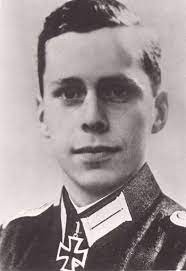
Winrich Behr, a decorated German officer, was chosen by Paul, who wanted to surrender, to visit Hitler and discuss the capitulation there. Behr arrived on January 14, 1943. Keitel was also present. There followed a 3-hour conversation with Hitler and Keitel, but the final result was “no capitulation”. According to Behr, Hitler was completely lost in contact with reality.
The Germans in the “boiler” had to survive at -50 degrees and many became completely insane. The suffering in the “boiler” was indescribable. There were also civilians and thousands of Russian prisoners present in the enclave. There was no food available. First the horses were eaten, then the dogs and the cats and finally they started eating the meat of the corpses.
There were still evacuations with aircraft via the Gumrak airstrip. The generals and senior officers pushed ahead, wounded were kicked out of the plane. The wounded who managed to get away were taken care of in Poland.
Meanwhile, the fate of the 6th Army was unknown in Germany. The fear prevailed that the Russians would kill everything and everyone. The soldiers had nothing to eat. On a visit to Paul, Captain Gerhard Dengler found that Paul and consorts still had normal food. Paul was now ready to think that the officers had to find out for themselves. Nothing was done.
On February 2, 100,000 Germans, including Paul, surrendered. Some 10,000 soldiers continued to fight in the rubble 14 days after the surrender. The surrender of the 6th Army was a tipping point in the war.
The prisoners were taken off in long lines, stumbling over the corpses. Although no liquidations were carried out by the Russians, 20,000 Germans died along the way from total exhaustion. The remaining 240,000 German prisoners of war had to share the available food with the Russians. Due to the large food shortage, this again led to cannibalism. Due to hunger, another 50,000 German prisoners died in the camps in March 1943, despite the fact that the Soviet doctors did their utmost to help as best they could. Thousands of Germans were transported by Russia on trains to all kinds of camps. During this transport, another 15,000 Germans died.
Gradually, the situation in the camps improved. They could have normal food again. In May 1945 the war was definitely over, but the Germans were promised that they could go home if Stalingrad had been rebuilt. Stalingrad has indeed been rebuilt by German forced labour.
Konrad Adenauer eventually managed to return the remaining 6000 German soldiers to Germany. In 1955, the last ones returned. But 250,000 Germans did not return and are still not buried in many places to this day.
Finally
The loss of the German army in Russia was so great that the end of the Third Reich was rapidly approaching. The Allies advanced to Berlin and so did the Russians. Hitler and his army were defeated after much bloodshed on the streets of Berlin. It was the end of the Third Reich. Churchill’s words still thunder after today:
From Stettin on the Baltic Sea to Trieste on the Adriatic, an iron curtain has descended. All our sacrifices have not resulted in the liberated Europe we had in mind, nor a Europe that contains the ingredients for a permanent peace.